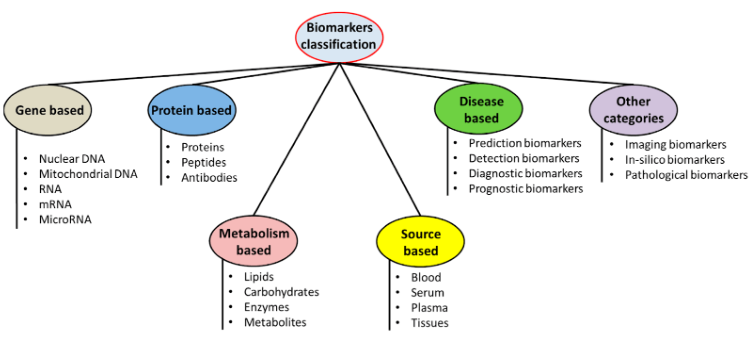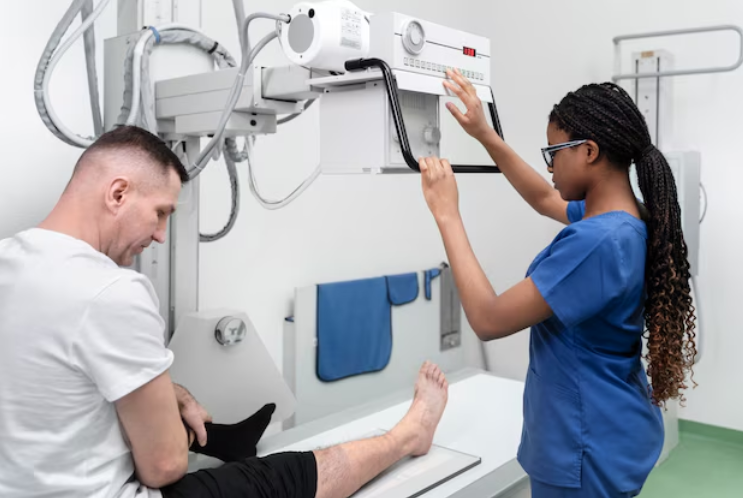The Role of Imaging and Biomarkers in Lyme Disease Diagnosis


Lyme disease is a complex condition caused by Borrelia burgdorferi bacteria, generally requiring very precise approaches to diagnosis. Including imaging tests and biomarkers has transformed the diagnostic approach to improve accuracy and allow for early detection. With this knowledge, patients can be treated promptly, and improve disease management.
What is the role of biomarkers in Lyme disease diagnosis?
The role of Biomarkers in Lyme disease diagnosis is to provide measurable indicators of infection, such as antibodies, antigens, or DNA fragments. The biomarkers help early detection and monitoring, reducing misdiagnosis and improving treatment accuracy.
Biomarkers are essential diagnostic tools for Lyme disease, providing biological evidence of infection. They include particular antibodies like IgM and IgG, fragments of Borrelia DNA, and antigens such as the C6 peptide. Such biomarkers are significantly helpful in diagnosing the disease where clinical symptoms overlap with other diseases, thereby increasing the sensitivity and specificity of the diagnostic outcome.
Biomarkers can detect infection at a molecular level, meaning earlier and more precise intervention, with reduced risk for complications. Advanced diagnostic techniques now include biomarker analysis to yield faster and more reliable results, enabling timely treatment and improved patient outcomes.

What are the most reliable biomarkers for Lyme disease?
The most reliable biomarkers for Lyme disease include the C6 peptide, DNA fragments from the bacteria Borrelia, and IgM and IgG antibodies. These biomarkers improve diagnostic accuracy, particularly in early and ambiguous cases.
Key biomarkers will enhance the diagnostic process by detecting specific biological indicators to identify Lyme disease. The presence of IgM dominates early stages, while IgG antibody responses indicate past infection. A more sensitive and specific method detects Borrelia antigens with the C6 peptide test. PCR tests targeting Borrelia DNA fragments are highly specific and helpful in challenging cases.
These biomarkers have a minimum number of false negatives and are essential in offering clinicians insight into the disease’s existence and progression. Their dependability has also made them integral to current diagnostic approaches, thereby enabling timely and effective treatment.
Can imaging replace biomarkers in Lyme disease diagnosis?
Imaging cannot replace biomarkers in Lyme disease diagnosis, as biomarkers detect infection at a molecular level. However, imaging detects physical complications and, therefore, is equally important for the comprehensive approach.
Biomarkers are essential at the early stage of diagnosis for the identification of diseases before their physical symptoms start to manifest themselves. Imaging is, instead, very useful in late-stage diagnosis to provide useful details about complications such as arthritis or neurological damage.
Complimentarily, these diagnostic tools are used in identifying initial biomarkers and other forms of imaging that monitor disease progression. This then makes for a very balanced and robust diagnostic framework aimed at comprehensive and accurate review.
Why are biomarkers critical in early Lyme disease detection?

Biomarkers are critical in early Lyme disease detection as they determine the infection prior to its intensification. Early diagnosis and treatment avoid bad consequences like serious complications and improved prognosis.
Early detection of Lyme disease relies heavily on the evidence of infection provided by the biomarkers, namely, IgM antibodies and DNA fragments of Borrelia. These biomarkers play a crucial role, especially when clinical symptoms are indefinite or absent. Early intervention reduces the risk of this disease progressing to its chronic stages, where the prospects of treatment are tougher.
Advanced diagnostic tools nowadays integrate biomarker analysis, which can detect infections with high sensitivity. Such a diagnosis is prompt and accurate, improving treatment outcomes and preventing complications arising from long-term health damage.
How do imaging tests assist in diagnosing Lyme disease?
Imaging tests like MRI and PET scans can help diagnose Lyme disease by identifying its consequences, such as inflammation, joint damage, or neurological involvement. It is especially useful for evaluating the disease’s late-stage effects.
These tests can differentiate Lyme disease from other similar diseases like rheumatoid arthritis or multiple sclerosis. This imaging also supports biomarker testing with visual evidence for the actual disease manifestations that will serve to provide even better diagnosis results, but it cannot be used separately.
This integration ensures accurate assessments of disease progression and helps guide effective treatment strategies.
What advancements are improving Lyme disease diagnostics?
Advancements in Lyme disease diagnostics include next-generation sequencing and multiplex assays. These innovations improve biomarker detection, offering faster and more accurate diagnoses for better patient outcomes.
Next-Generation Sequencing (NGS) identifies Borrelia DNA with unmatched precision, and multiplex assays detect multiple biomarkers at once, making the diagnosis process more efficient. Point-of-care devices are now available for rapid and portable testing.
These improvements have advanced sensitivity and specificity for diagnostic results, lowered the timeframe needed, and were thus amenable to more rapid treatment response. With further progress in these technologies, Lyme disease diagnostics could be yet more accessible and dependable.
What are the limitations of Lyme disease biomarkers?
The limitations of Lyme disease biomarkers include false negatives in the early stages and cross-reactivity with other infections. Such limitations make it necessary to combine biomarkers with imaging tests for Lyme disease to enhance diagnostic accuracy.
These might include antibody-based tests, ELISA, and Western blot, which fail to catch the infection at the outset because the antibodies may take some time to appear or may be undetectable during the early stages. Then, cross-reactivity against other bacterial infections can raise false positives. Inflammatory markers are only helpful and are not specific markers for Lyme.
These limitations make it necessary to use adjunct diagnostics for Lyme disease, in this case, imaging, to increase the validity of its results. This will have a more concrete, understandable diagnosis with biomarkers accompanied by imaging tests.
The Key Takeaway
Imaging tests and biomarkers are revolutionizing Lyme disease diagnosis by improving precision and early detection. Whereas biomarkers provide molecular views, imaging identifies complications to provide a holistic approach toward diagnosis. The utilization of these tools ensures timely treatments and better patient outcomes that open the door for further innovative diagnostic solutions.
